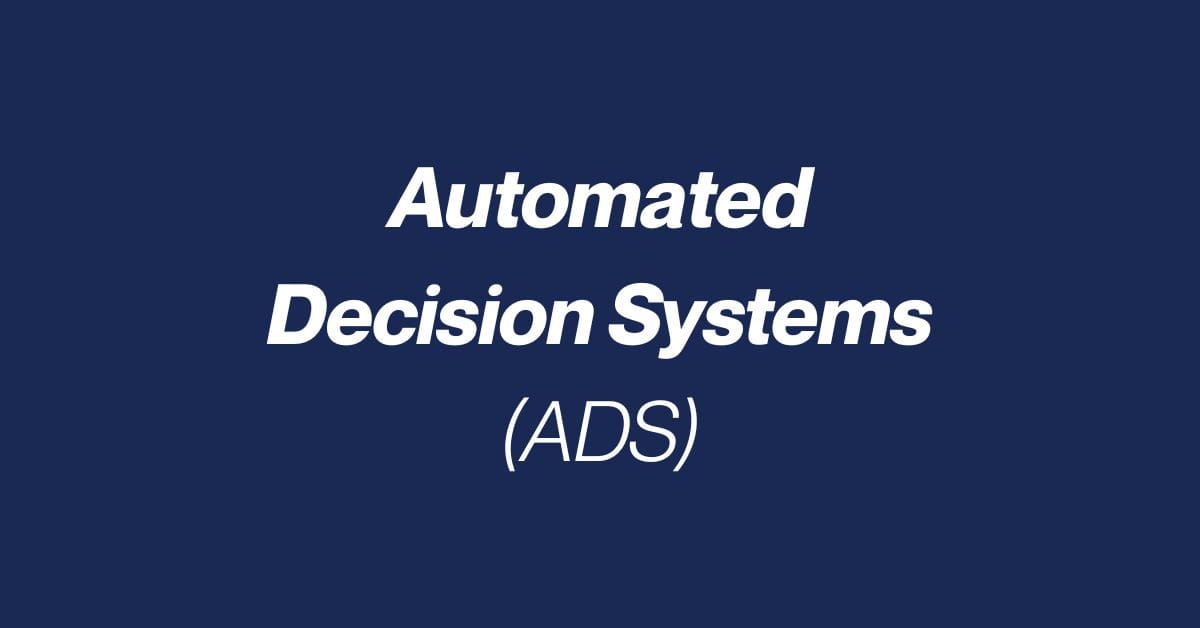Understanding Automated Decision Systems (ADS) and Why Counties Should Care
Back to News
As technology continues to evolve, state lawmakers are striving to better understand—and effectively regulate—the digital tools that are fundamental to the operations of the public and private sector. These include computer systems, software platforms, and networks that process and act on data in ways that directly affect employees, residents, and the delivery of essential services. While it may seem that the policy discourse at all levels of government has been solely about artificial intelligence (AI) in county government, its scope is far broader. This article touches on the full range of automated technologies shaping how local governments function today.
What is an Automated Decision System (ADS)?
Advancements in AI and machine learning have led to the development of automated decision systems (ADS), which are broadly defined as computational processes derived from machine learning, statistical modeling, data analytics, or AI to generate an outcome—like a score, recommendation, or classification—that impacts people and is meant to assist or replace human discretionary decision making.
These systems are often embedded in workplace technologies and used to optimize or streamline tasks. This means an ADS could be any system that makes or supports decisions about individuals, especially in contexts like hiring, job training, service delivery, or eligibility assessments.
How is California Responding?
In response to the growing use of AI in the workplace, California is taking steps to target and regulate the use of ADS in the workplace. The Civil Rights Department (CRD) approved regulations to prevent employment discrimination involving AI, providing clarity on how existing antidiscrimination laws apply. In addition, the California State Legislature has introduced several bills aimed at ensuring transparency and accountability when automated systems are used to make decisions that affect individuals. Two bills of note include SB 7 (McNerney) and AB 1018 (Bauer-Kahan).
SB 7 focuses on the employers’ use of ADS to make employment-related decisions. These decisions are broadly defined to include wages and benefits, work hours and schedule, performance evaluation, hiring, discipline, termination, job tasks and assignment of work, and access to work and training opportunities, among other things.
AB 1018 aims to regulate the development and deployment, by both the public and private sector, of ADS that are designed or used to make or facilitate consequential decisions, or decisions that materially impact the cost, terms, quality, or accessibility of specified services, opportunities, access, resources, or treatment for natural persons. Examples of consequential decisions include:
- Employment-related decisions (same definition as above)
- Home appraisals and public housing
- Access to essential utilities or healthcare
- Child protective services
- Criminal justice decisions
- Elections
- Government benefits or services
While these bills don’t apply to basic IT tools like spam filters or calculators, they do cover many of the technologies that county governments may already be using.
Why Counties Should Pay Attention
You may think ADS is simply AI, but it can be much more. Based on the definition, ADS can include tools and systems that impact all county operations, even if you may not be using obvious forms like ChatGPT, Microsoft Copilot, or Grok. Even if these tools come from third-party vendors, if they’re making or influencing decisions that affect employees or the public, they could be regulated under these bills.
For example, certain types of statistical modeling or data analytics tools may fall under the ADS definition. Have you ever used an automated system to screen job applications, filtering candidates based on qualifications listed on their resumes? Or contracted third-party vendors to develop employee training platforms to personalize training, assess progress, or make decisions about training pathways? What about tools used to schedule employee work hours more efficiently? Do your spreadsheets utilize statistical modeling or data analytics components to inform decisions? If your systems use machine learning or automated rules to make or assist in decisions, they certainly could fall under the ADS umbrella.
Bottom Line
ADS are likely already part of county operations—even if they don’t look like “AI.” The effort to regulate the use of these technologies in California is happening now and will continue to happen in the future. Understanding how these systems work, where they are used, and how they can improve processes, enhance services to residents, and support employees to do their best is important as we continue to engage with policymakers shaping the future of technology regulation. If you’d like additional resources, the National Association of Counties (NACo) offers the AI County Compass: A Comprehensive Toolkit for Local Governance and Implementation of Artificial Intelligence to help counties navigate these changes responsibly.
Do you have questions about anything mentioned in this article? Contact Emma Jungwirth, Senior Legislative Advocate, at ejungwirth@counties.org and Julissa Ceja Cardenas, Legislative Analyst, at jcejacardenas@counties.org.